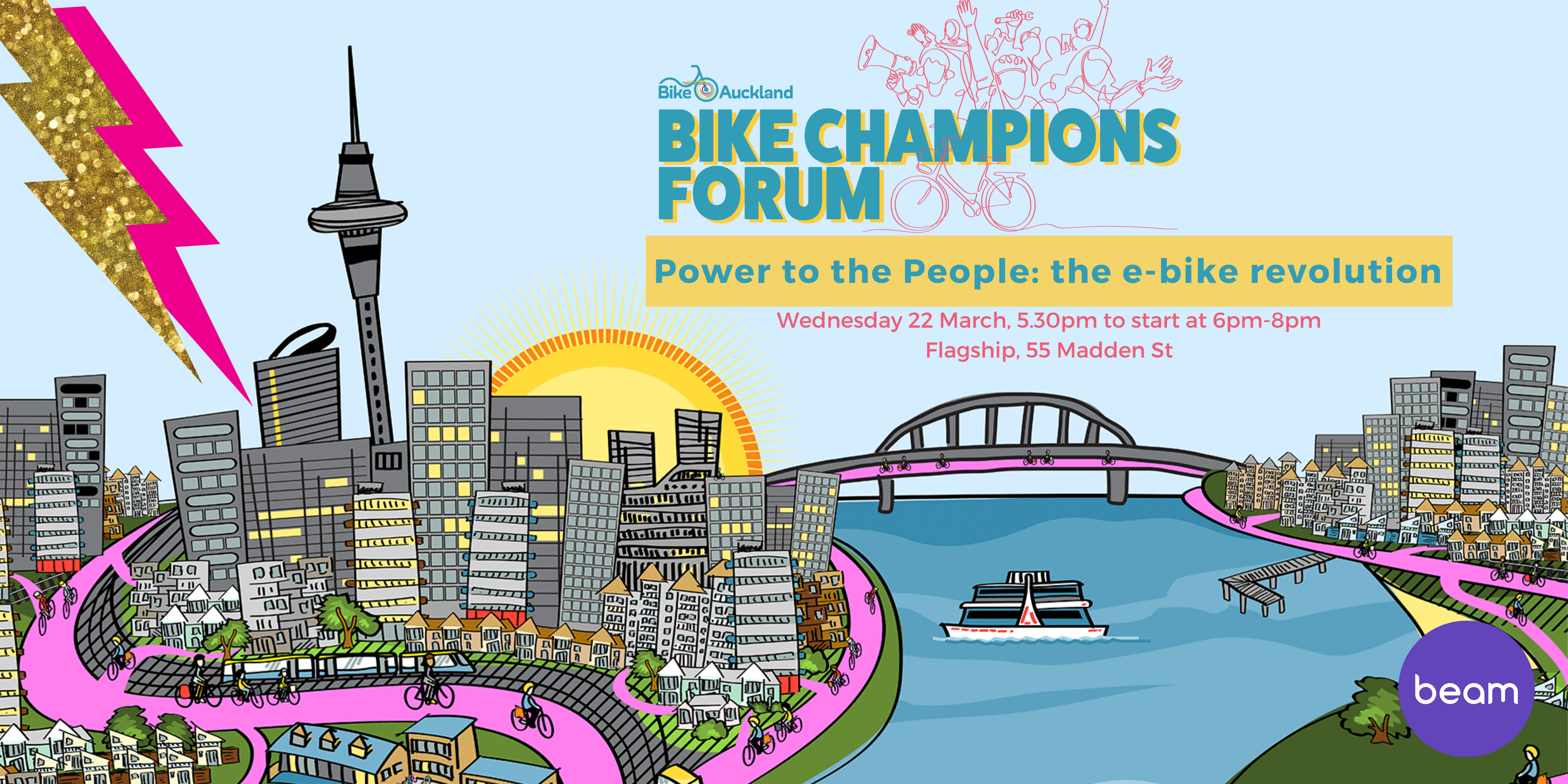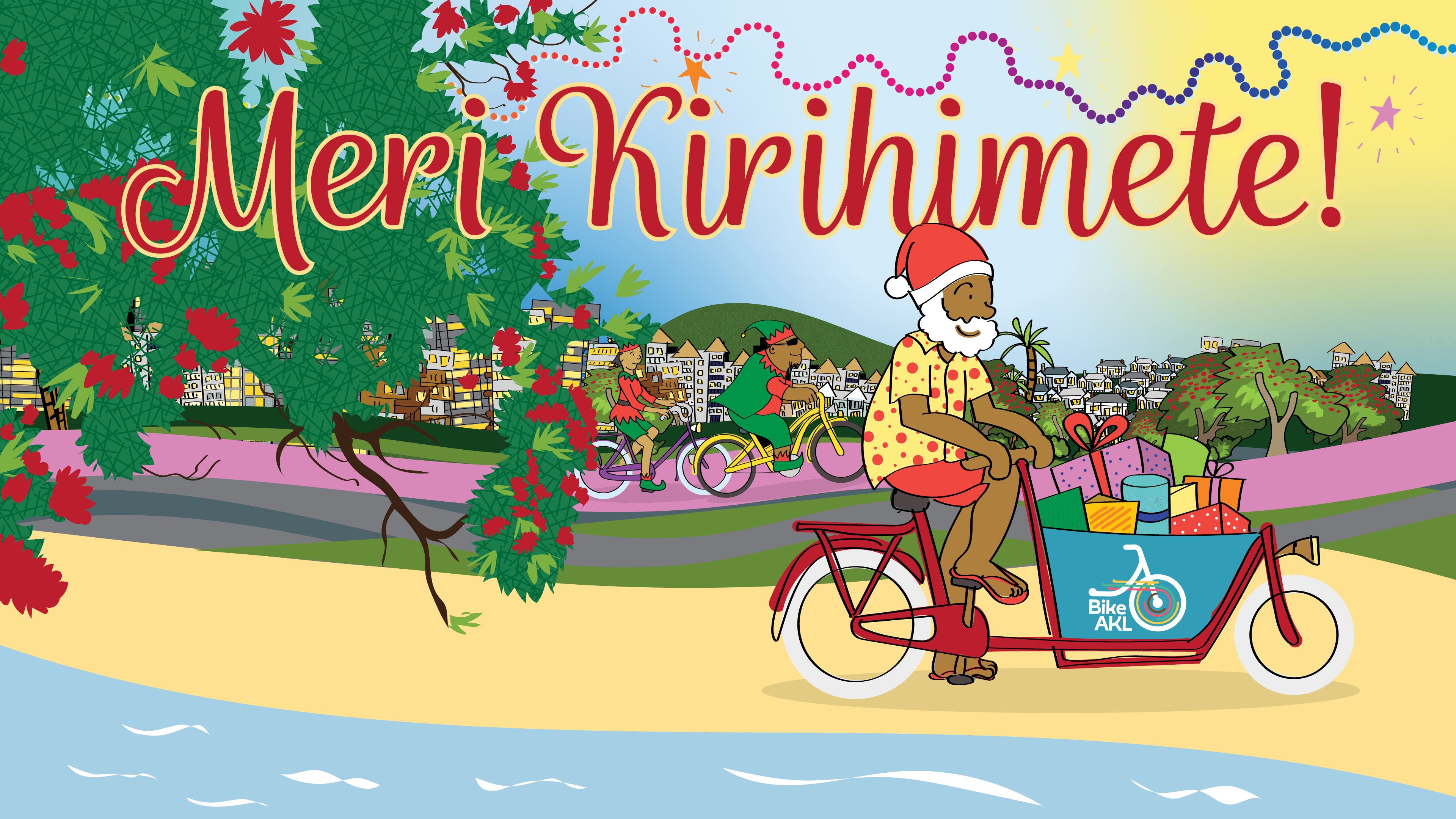This is a guest blog by accessibility and sustainable transport advocate Tim Adriaansen. Tim looks at how a modest cost reduction in the purchase price of an e-bike, or covering the full cost for disadvantaged individuals, would go a long way to freeing up our roads, improving our health and fighting climate change.
Support the call for an e-bike rebate scheme in Aotearoa New Zealand by signing women’s health advocate and former track cyclists Kirstie Klingenberg’s petition here.
To find out more come along to our Bike Champion’s Forum – Power to the People: the e-bike revolution
A friend calls you and asks for your help.
They tell you that while out and about nearby, they slipped over and landed arms-first. Now their wrist is swollen, hurting like heck and they’re feeling a bit queasy from the whole experience. Their car is parked just around the corner, but they don’t feel up to driving. Can you help to get them to the hospital?
Of course you can.
You both jump into their car, and set off in the direction of the local medical centre. You drive onto the motorway, only to get stuck in traffic. It’s stop-start every few seconds, with brake lights glaring, in rolling bands, from windscreen to horizon.
But there’s a handy button on the dashboard labelled simply as “Reduce Traffic”. Once pressed, a quarter of all the cars on the road disappear, and everything speeds up to free-flow.
Would you push it?
(Don’t worry—the occupants of all those disappearing cars also arrive safely at their intended destinations!)

Soon enough you arrive at the hospital. But there’s a queue here, too. There’s a wait to see the doctor, another wait for the radiographer. Everywhere you look, the system seems to be creaking under the pressure of too many patients and not enough capacity.
At the reception desk sits a small gold bell. The label says “Relieve Healthcare System”. Once chimed, the workload of every doctor and nurse in the country suddenly becomes more manageable. People get sick less often, and heal more quickly.
Would you ring it?

On the way home, with your friend’s arm in a fresh plaster cast, you notice the fuel light coming on in their car. You decide to help them out by filling up the gas tank, to keep them going while they heal. You pull into the service station and get started when a young mother begins to do the same on the pump opposite you. Her two young children are in the back of the car, restless.
“Mum! Can we get an ice cream?” one of them pleads.
You see the young mother smile at her child, then turn to watch the numbers counting upwards on the fuel pump. Her smile fades, and for a moment, her face gives way to the pressures of raising a young family at a time when it seems like the price of everything is increasing more quickly than ever.
“Not today sweetie”, she replies to a disappointed child.
Then you see it: A button on the keypad in front of you that reads “Reduce Fuel Prices”. If you press it, everybody at this service station, and at every station across the country, will get 20% off their fuel bill, no questions asked.
Would you press it?

Miracles do happen
A magical button which clears traffic off the motorway network, eases the healthcare system by improving people’s health and reduces fuel costs might seem like a fantasy unicorn.
But in 2019, scientists at Delft University of Technology found a way to do just that.
Working with a study cohort who previously drove to and from the university campus, the researchers were able to immediately and permanently reduce the amount of driving people did by 25%. How did they do it?
They gave them e-bikes.

Study participants were loaned an e-bike for 8 weeks—deemed long enough to ‘break’ the driving habit—and instructed to use it for commuting at least twice per week. They were free to use it more often, including for non-commuter trips.
After the study period, the authors reported a “Significant decrease in car use and significant increase in e-bike and bicycle use.”
Three months after the completion of the pilot study, car use was still 25% lower than before, and both push-bike and e-bike mode share had increased significantly (the researchers suspect that participants enjoyed using the e-bikes so much, it rekindled their enjoyment of riding any type of bicycle, so they kept on riding—even after they had to give the e-bikes back).

Understanding long-term changes in commuter mode use of a pilot featuring free e-bike trials; Danique Ton & Dorine Duives; 2021
Of course, this is in The Netherlands, a whimsical fantasyland of tree-lined bike paths stretching from windmill to windmill. Who wouldn’t want to experience such a joyous commute, flying along on your electric wheels, taking in the smells of tulip fields and fresh made cheese?
Thankfully, various e-bike schemes and trials have been popping up all around the world, with consistently fantastic results. In terms of Light Vehicle Travel (LVT) reduction, a Swedish trial found that once they got their hands on an e-bike, people drove 21% less, while a U.K. trial put the figure at 20%. A survey of 1,796 North American e-bike owners found that 34% of respondents used their e-bike to get to work or school, and that roughly half of those had previously used a car.
Saving time by saving lives…
There have also been some unexpected findings when it comes to e-bikes. One of the biggest, perhaps, is that e-bikes tend to have greater health benefits than traditional push bikes.
To understand this, it’s best to start by understanding one of the most important mantras when it comes to helping people practise regular exercise:
The best exercise anybody can do is the one they’re going to keep doing.
In the pursuit of convenience, we’ve constructed urban environments where movement has been designed out.
Sprawling suburbs mean that the distance from home to the nearest shops, school or workplace are often too far to walk. As roads have filled with greater numbers of ever-bigger cars, light trucks and SUVs, they have become hostile places to ride a bicycle. The rise of online ordering means that many people are forgoing a walk around their favourite stores or local supermarket. Even the micro-movements we once made, like crossing the office to talk to a colleague, are often replaced with digital messaging services or sending an email.

Modern built environments often suppress physical activity.
Humans have built ourselves into immobility, with devastating consequences—including alarming rates of heart disease, diabetes, lung disease, cancer and mental illness.
Around the world, and particularly in OECD nations, nearly half of all adults get less than the minimum recommended amount of physical exercise. Sport and gyms are attractive to some, but a chore for most.
That’s where e-bikes come in. First and foremost, as we’ve already seen, e-bikes tend to replace around 20% of seated, mostly sedentary car journeys with moderately active pedalling and balancing.
But the reason e-bikes are the secret weapon against inactivity is the inescapable feeling of joy that people get when they ride them.

The most common reasons people purchase e-bikes are for recreation, to replace car trips and to make riding a bike easier. They’re not purchased in an attempt to punish oneself into better health. Yet they achieve those results anyway.
Because people enjoy riding their e-bikes so much, they end up using them more often and for longer duration than they would have used a traditional push-bike. The cumulative effect is that they get more exercise, not less—along with all the health improving benefits this brings.
A 2019 study concluded: “e-bike use leads to substantial increases in physical activity in e-bikers switching from private motorized vehicle and public transport, while net losses in physical activity in e-bikers switching from cycling were much less, due to increases in overall travel distance.”
Now, if you’re a keen cyclist, you’re probably still going to get more exercise on your push bike. But most of the population aren’t keen cyclists; and for them, an e-bike would give a major boost to their daily activity levels.
…And saving money by saving the world
As if the transport and health benefits of e-bikes weren’t enough, their strongest selling point is yet to come:
Filling the tank on an e-bike costs around 20 cents.
Nobody is arguing that we should be using e-bikes for every trip. A variety of different motor vehicles will still be required to meet everybody’s transport needs. But for most people, an e-bike could be a fun, healthy and practical way to complete at least some of their regular journeys.

A recent study from Brabrant, The Netherlands shows us, perhaps, what is possible. While The Netherlands undoubtedly has a more advanced cycle network than most countries around the world, they also still have all the transport needs of any other developed nation (set to a backdrop of a generally unfavourable climate!)
There are Dutch tradespeople, families with children, elderly and disabled people. All of them have diverse transport needs which will mean that for some, a bicycle is never a practical option.
In the Brabrant study, participants who previously used a car as their main mode of transport were provided with an e-bike. They were also paid, per kilometre, to ride it (€0.15 per kilometre during the peak hours and €0.08 per kilometre in the off-peak hours). For the duration of the study, 73% of trips ended up being made by e-bike.
This gives us an approximate “best case scenario” to aim for: On average, roughly three-quarters of trips can be completed by e-bike, if conditions allow it.
Now imagine what it might mean for families if they could replace some, or even most, of their car use with something that cost so much less to operate. As GenLess points out – an e-bike can get you to work and back, 5 days a week for a year, for about $20.
Every trip made by e-bike is a trip that’s not burning fuel. It means a tank of gas in the car lasts longer, lowering household fuel bills in line with the reduction in car use.
And every litre of petrol and diesel not burned means less climate-heating carbon emissions. Every time somebody has an opportunity to jump on an e-bike instead of taking the car, they’re helping to protect future generations from the impacts of climate change.
A RideReport summary of the highly successful Denver, Colorado e-bike subsidy scheme concluded “Establishing a program similar to Denver’s ebike rebate program would likely reduce GHG emissions from transportation in cities and save residents money”
It’s not often that climate action will cost us less than the alternative. But when it comes to e-bikes, we can save money and save the planet at the same time.

Pedalling past the barriers
Taken together, the benefits of widespread e-bike adoption are unparalleled. We have a technology available to us, right now, which can make a huge difference to some of the most pressing issues of our time.
But there is a catch: The families that would benefit the most from a modest reduction in fuel prices are the families who struggle to come up with enough money to purchase an e-bike in the first place. We need to help them break free from car dependance.
With an e-bike rebate scheme, we can reduce the cost barrier to this transport miracle pill. A modest cost reduction in the purchase price, or covering the full cost for disadvantaged individuals, will go a long way to freeing up our roads, improving our health and fighting global heating.
Support the call for an e-bike rebate scheme in Aotearoa New Zealand by signing women’s health advocate and former track cyclist Kirstie Klingenberg’s petition.





